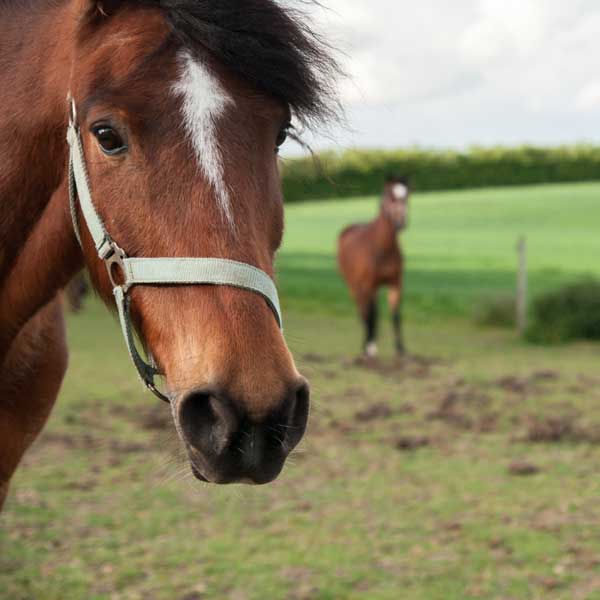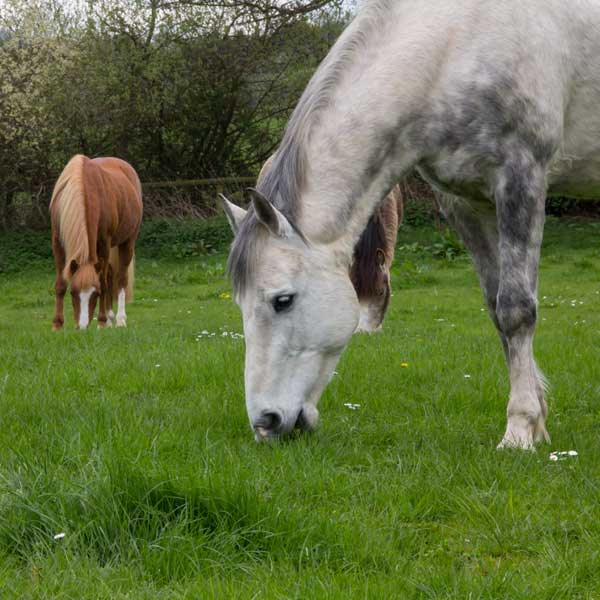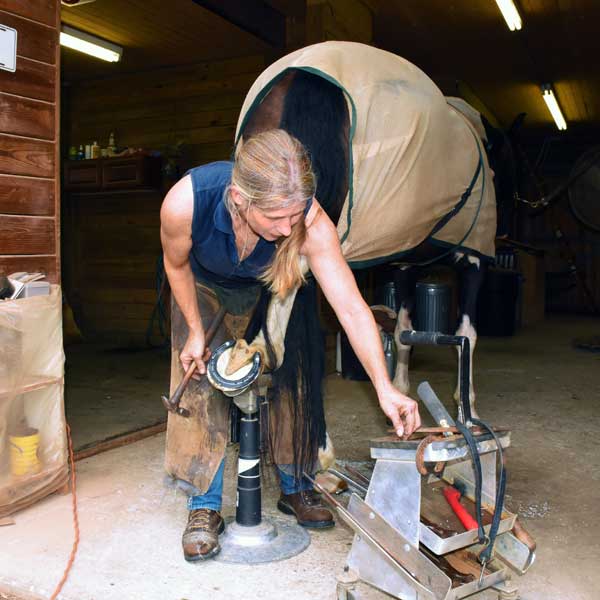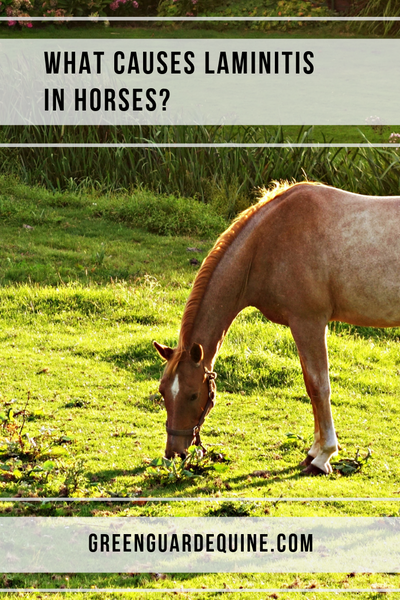Il est important de noter que la fourbure est une affection secondaire. La cause sous-jacente doit être traitée tout comme la fourbure. Quelle que soit la cause, les lames, ou tissus mous, à l'intérieur du sabot commencent à s'enflammer. Ceci est assez douloureux et peut même faire couler, tourner ou déplacer l'os du cercueil dans le sabot.
Mais pourquoi les lames commencent-elles à devenir enflammées et douloureuses ? Bien que la fourbure puisse se développer pour de nombreuses raisons, il existe quatre catégories générales de causes de fourbure.

La fourbure est une affection secondaire, nous devons donc examiner les causes des causes. Photo de Petro Shkvarok .
Les quatre principales catégories de causes de la fourbure :
- Surcharge
- Inflammation
- Problèmes métaboliques
- Traumatisme
Surcharge
La fourbure des membres de soutien est une situation dans laquelle un cheval a une blessure à une jambe et la jambe correspondante commence à supporter des quantités de poids anormalement importantes. Lorsqu'un cheval déplace son poids corporel de la jambe blessée vers la jambe ou les jambes saines, la quantité de flux sanguin vers le sabot est compromise, réduisant l'oxygène et les nutriments vers le sabot, ce qui peut entraîner une fourbure. Dans ces cas, la fourbure prend généralement un certain temps à se développer, de quelques semaines à quelques mois.
Inflammation
L'inflammation peut également être une cause de fourbure. Cela inclut de nombreuses situations apparemment sans rapport : de la diarrhée et des coliques à la toxicité du noyer noir, à un cheval qui s'est nourri de nourriture, à une jument avec un placenta retenu ou même à un cheval qui a de la fièvre. La réponse inflammatoire provoque une réaction en chaîne d'événements, dont certains sont compris et d'autres non, qui peuvent déclencher une fourbure.

Trop d'herbe de printemps douce peut altérer la chimie de l'estomac d'un cheval. Photo par Jays Photos .
En cas de surcharge soudaine d'aliments ou d'herbe printanière luxuriante, les amidons et les glucides non solubles (NSC) de ces délicieux aliments ne peuvent pas être décomposés assez rapidement dans l'estomac du cheval. Les NSC se rendent ensuite dans l'intestin, où les microbes résidents du cheval se régalent et demi !
Ce métabolisme rapide modifie le pH dans l'intestin, tuant certains microbes et créant des fissures dans la paroi intestinale. Avec la paroi intestinale compromise, les endotoxines des microbes mourants pénètrent dans la circulation sanguine qui circule ensuite vers le sabot et cause des dommages.
Problèmes métaboliques
Les problèmes métaboliques sont un partenaire commun de la fourbure. Le syndrome métabolique équin (EMS), la maladie de Cushing et la résistance à l'insuline modifient tous la façon dont un cheval métabolise les glucides, ce qui modifie les niveaux d'insuline. Les chevaux développent des problèmes métaboliques pour plusieurs raisons. Une tumeur de l'hypophyse dans le cerveau est responsable de la maladie de Cushing.

Un cheval présentant des conditions métaboliques préexistantes peut présenter un risque particulier de fourbure. Photo par Jays Photos .
Les chevaux en surpoids peuvent développer une EMS et une résistance à l'insuline. Il existe également des composants génétiques, alimentaires et d'exercice. Des analyses de sang régulières peuvent vous alerter des changements métaboliques de votre cheval bien avant que vous ne remarquiez un changement de poids et avant que la fourbure ne se développe.
Traumatisme et surutilisation
Les situations de traumatisme et de surutilisation peuvent également entraîner une fourbure chez les chevaux pieds nus et ferrés. Un cheval qui a travaillé sur un sol dur ou pendant de longues périodes peut développer ce que l'on appelle le " fondeur de route ".
Dans les cas de fondeurs de route, la commotion cérébrale et le traumatisme peuvent perturber la circulation sanguine, déchirer les lames et contusionner le sabot, provoquant une fourbure. Un traumatisme du sabot peut également survenir chez le cheval inapte à travailler au-delà de ses capacités, ou chez le cheval en surpoids.

Les maréchaux-ferrants abordent les conséquences de la fourbure des sabots des chevaux. Photo de Jill Richardson King .
Comprendre les causes de la fourbure peut vous aider à reconnaître les situations dans lesquelles votre cheval pourrait être à risque. En raison de la nature douloureuse de la fourbure, une détection et une intervention précoces sont essentielles. Appelez votre vétérinaire si vous avez des inquiétudes concernant les sabots de votre cheval.
Liv Gude est la fondatrice de Pro Equine Grooms , une communauté dédiée aux meilleurs soins pour chevaux.









